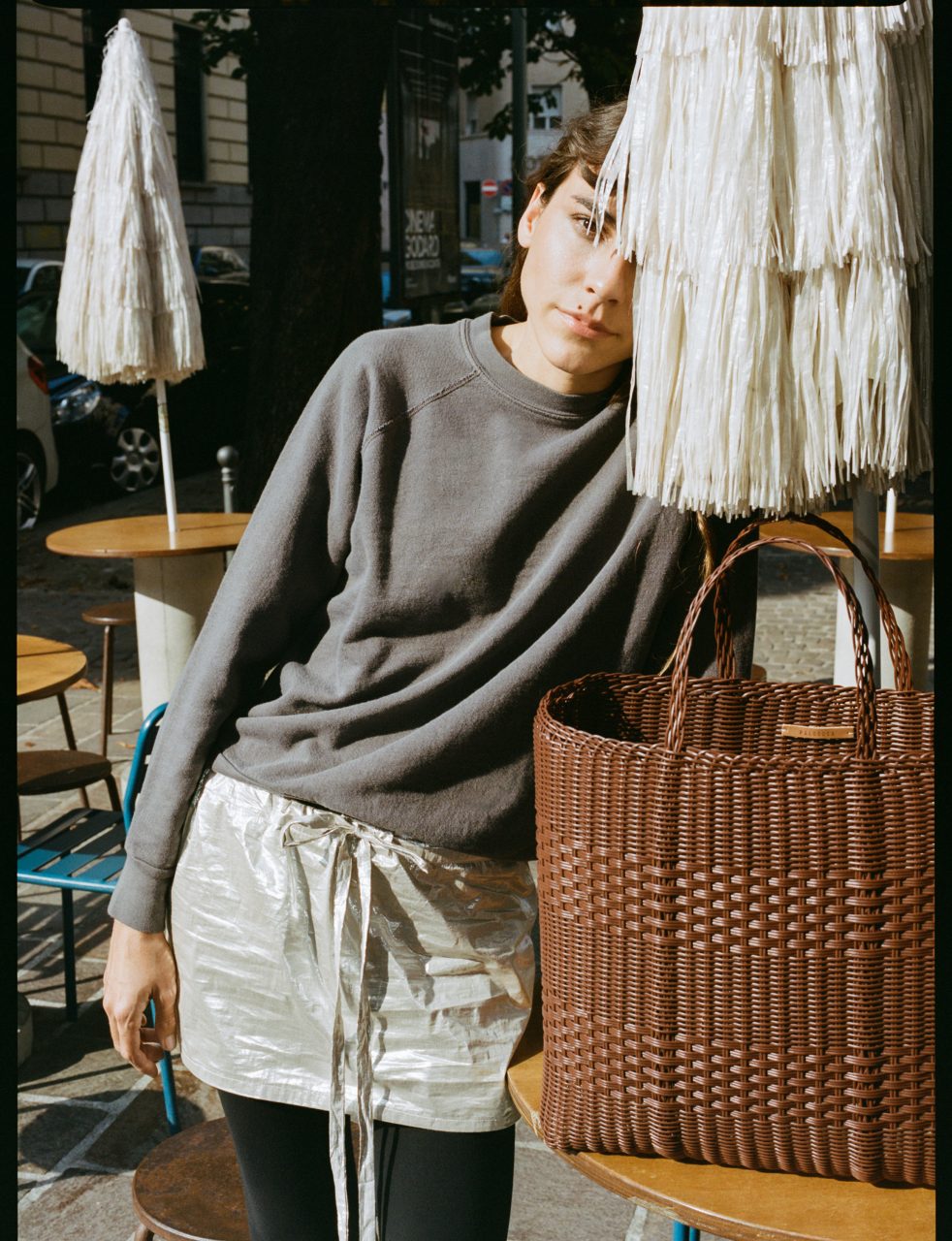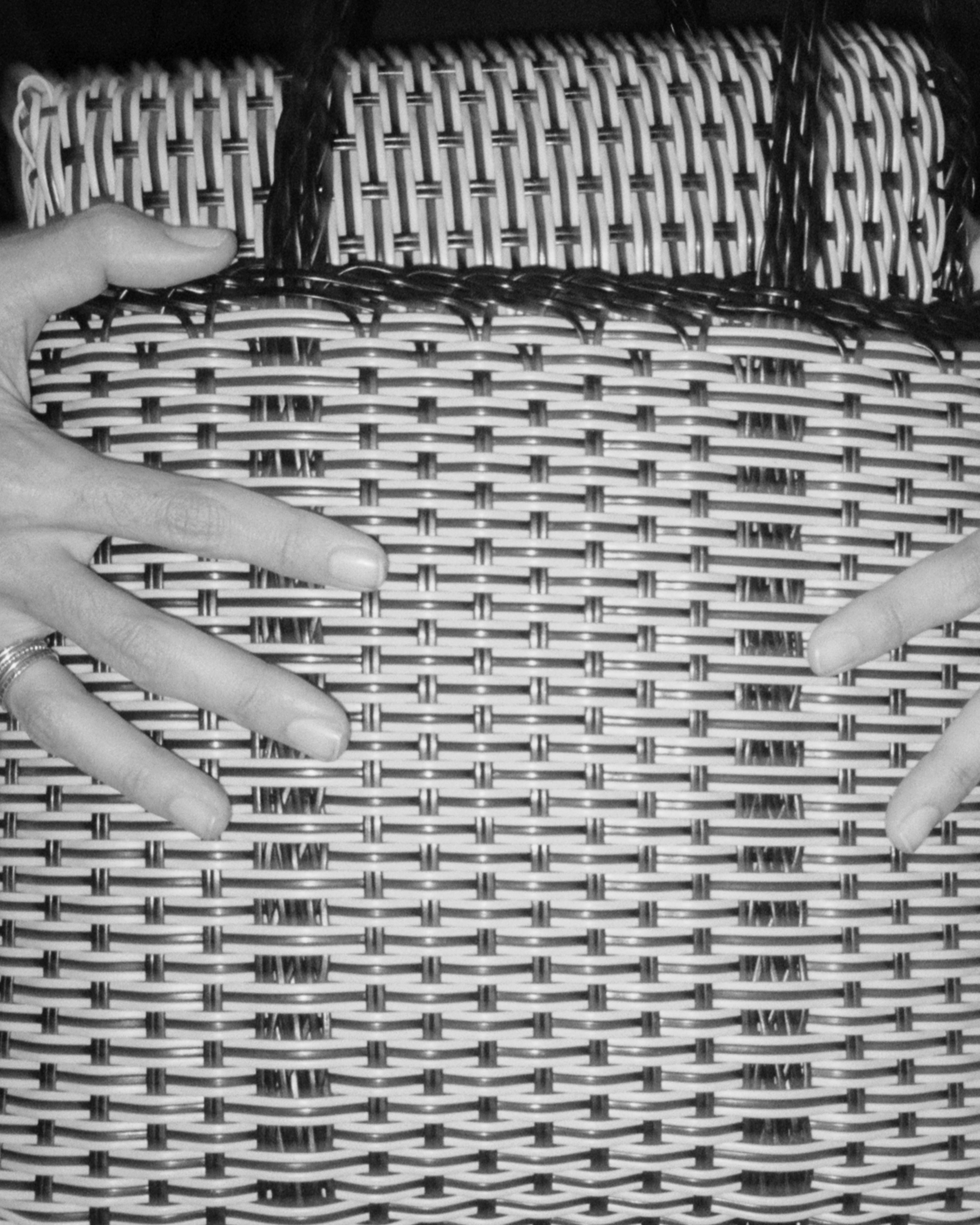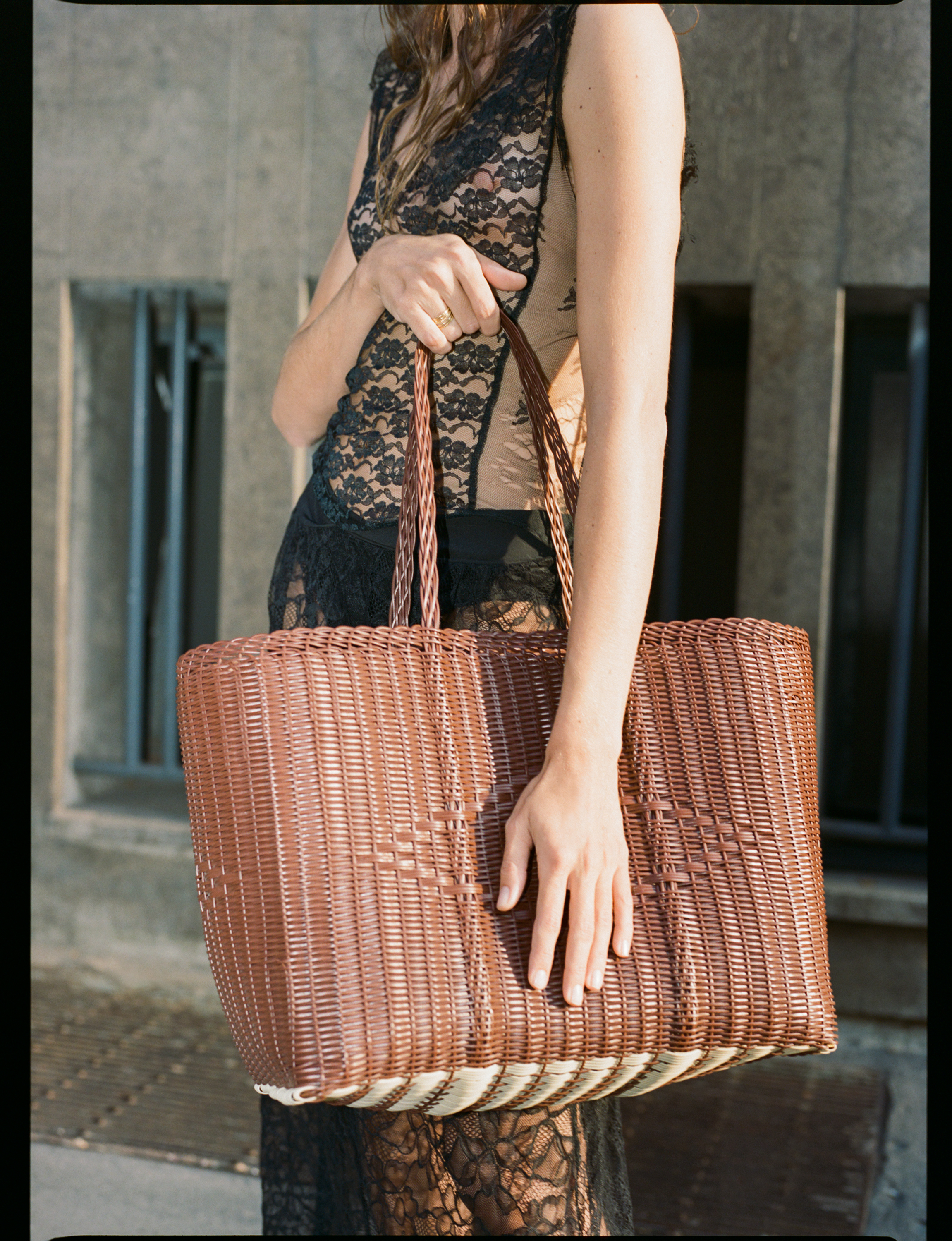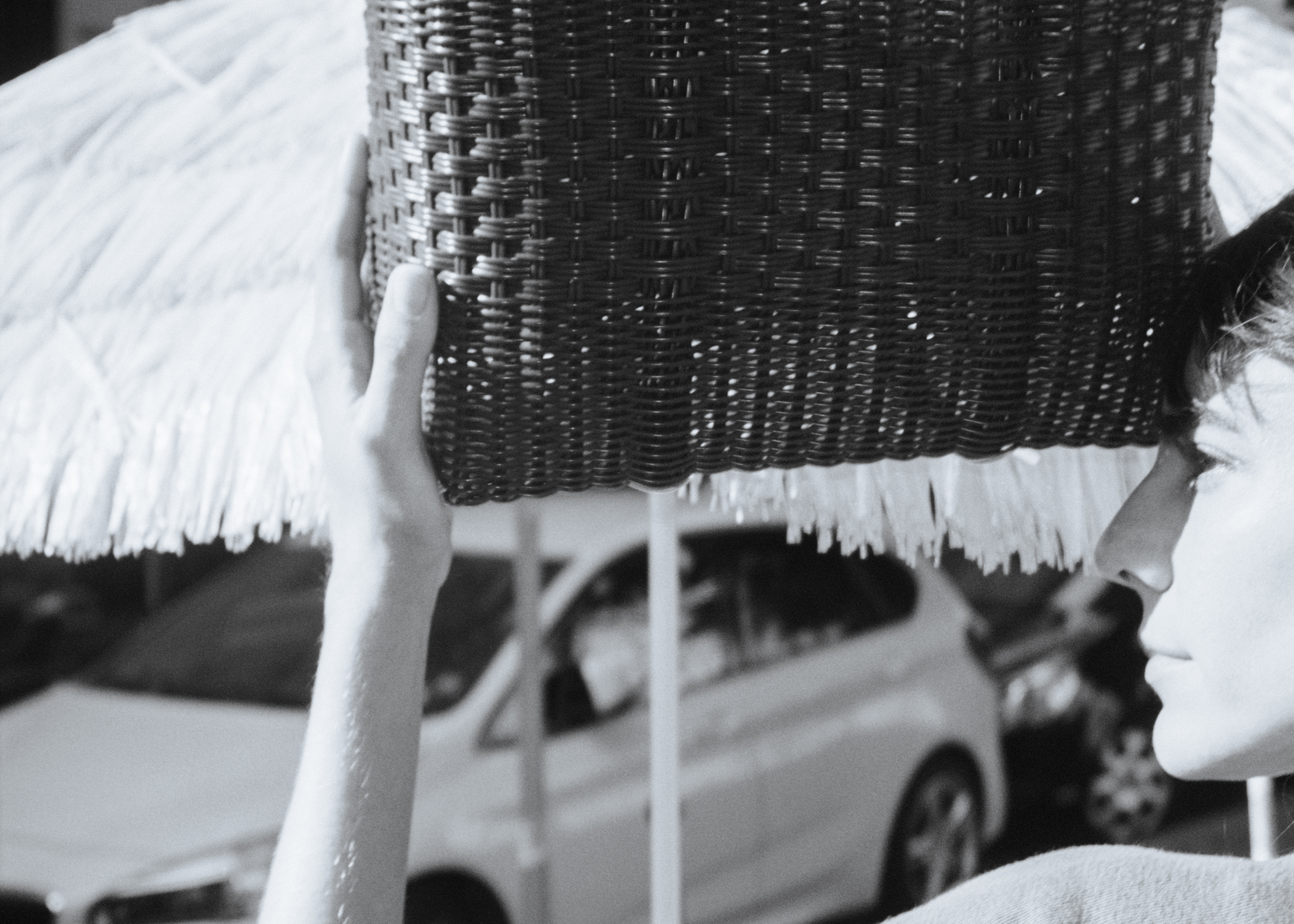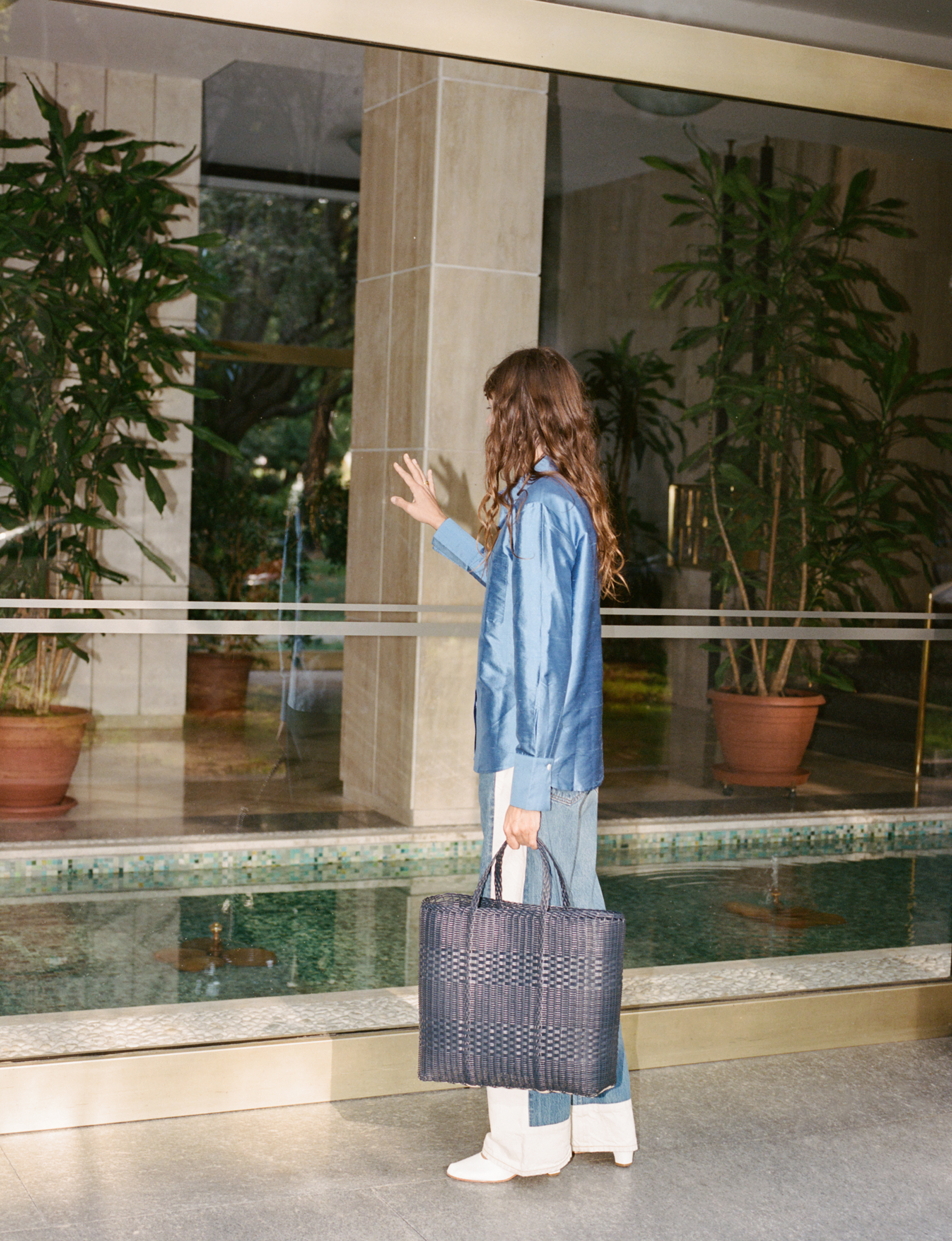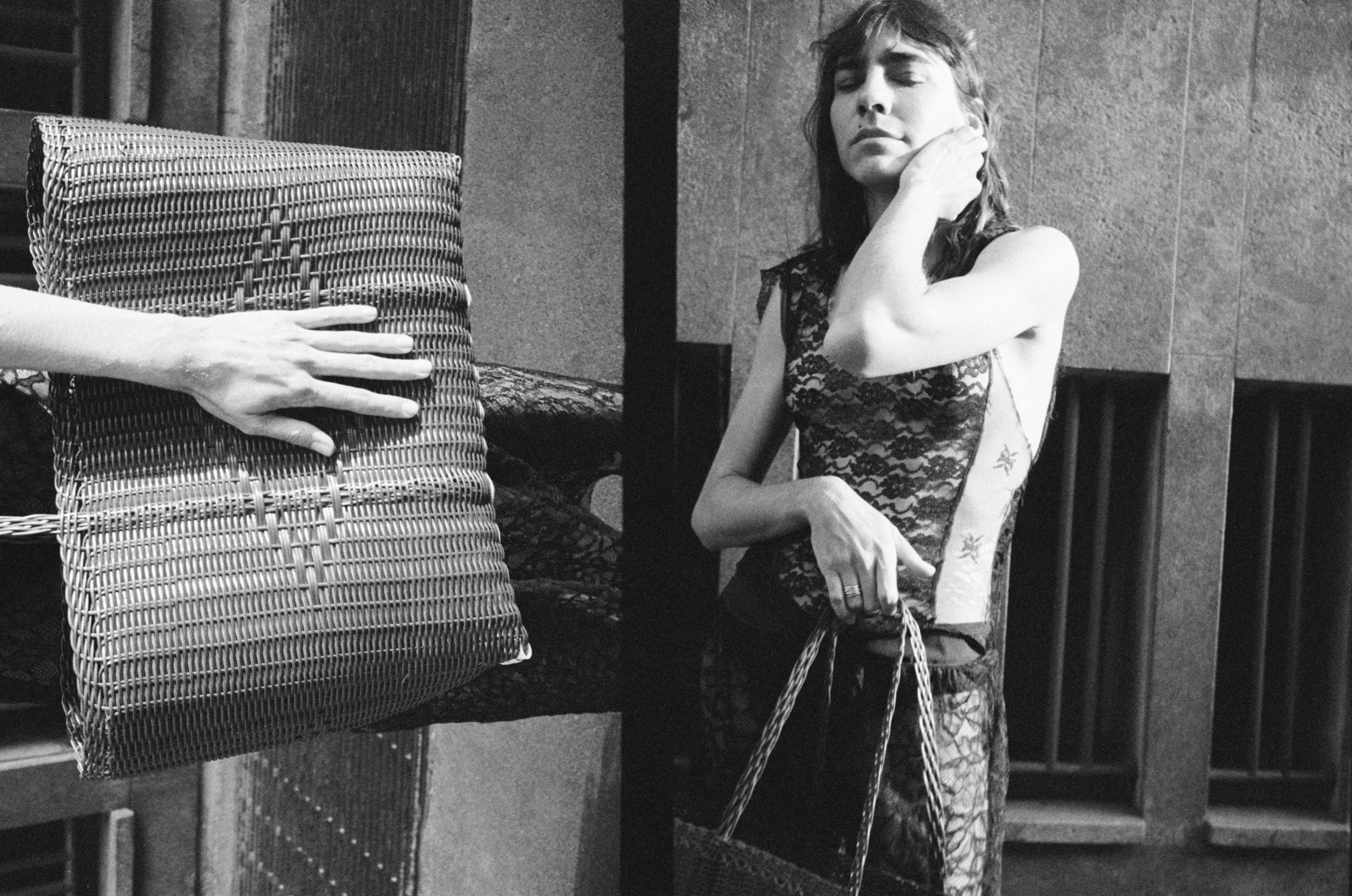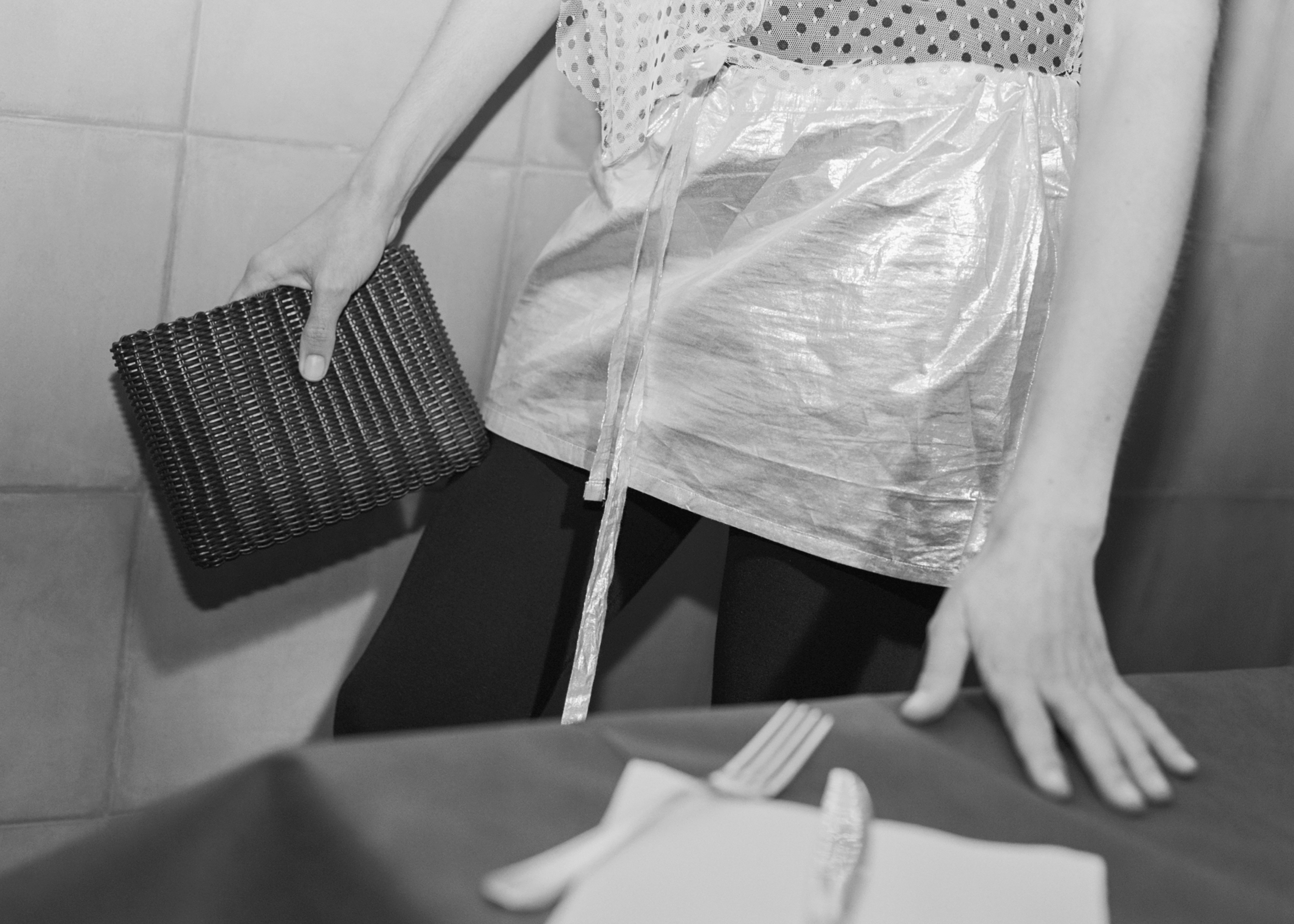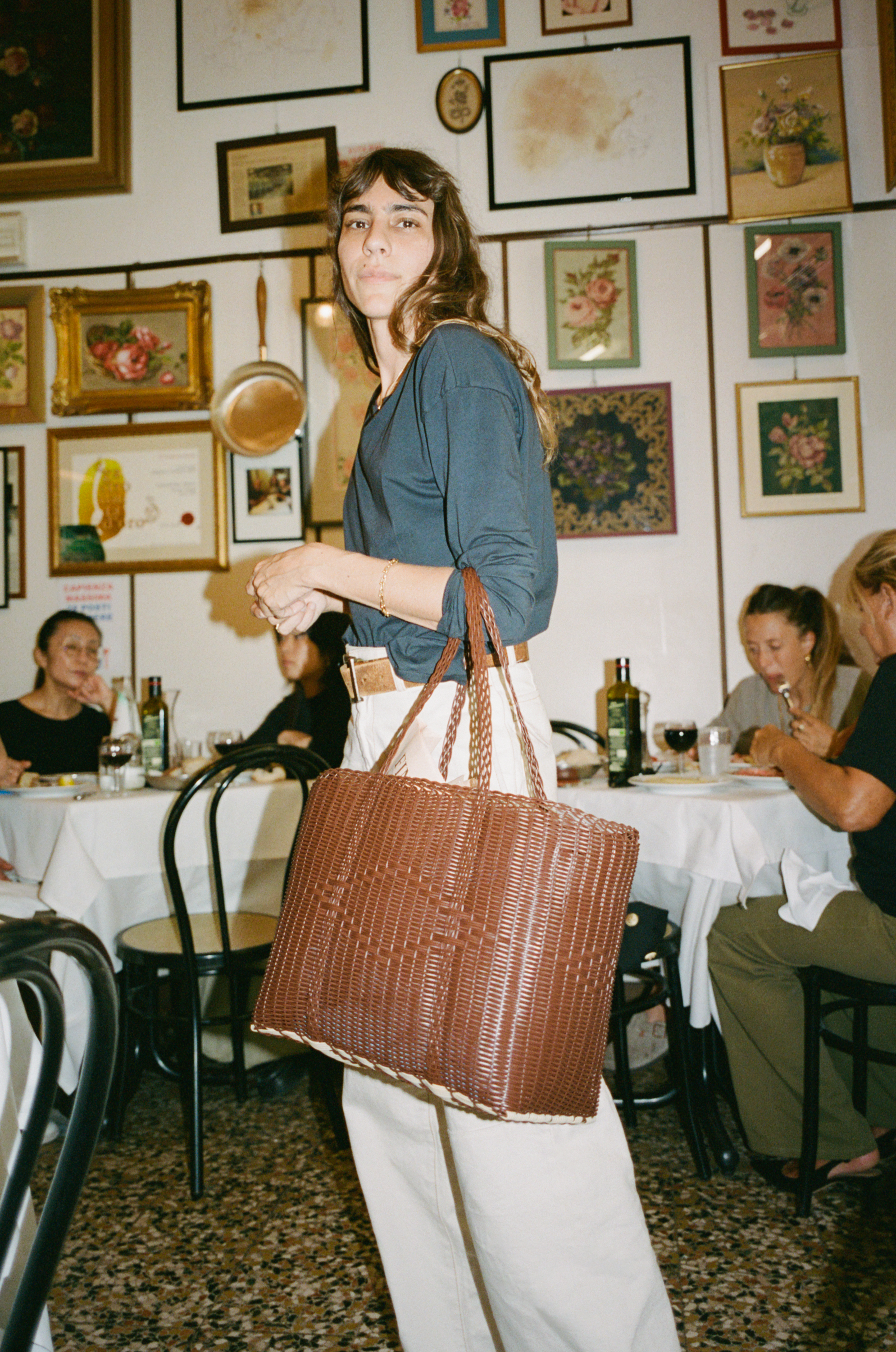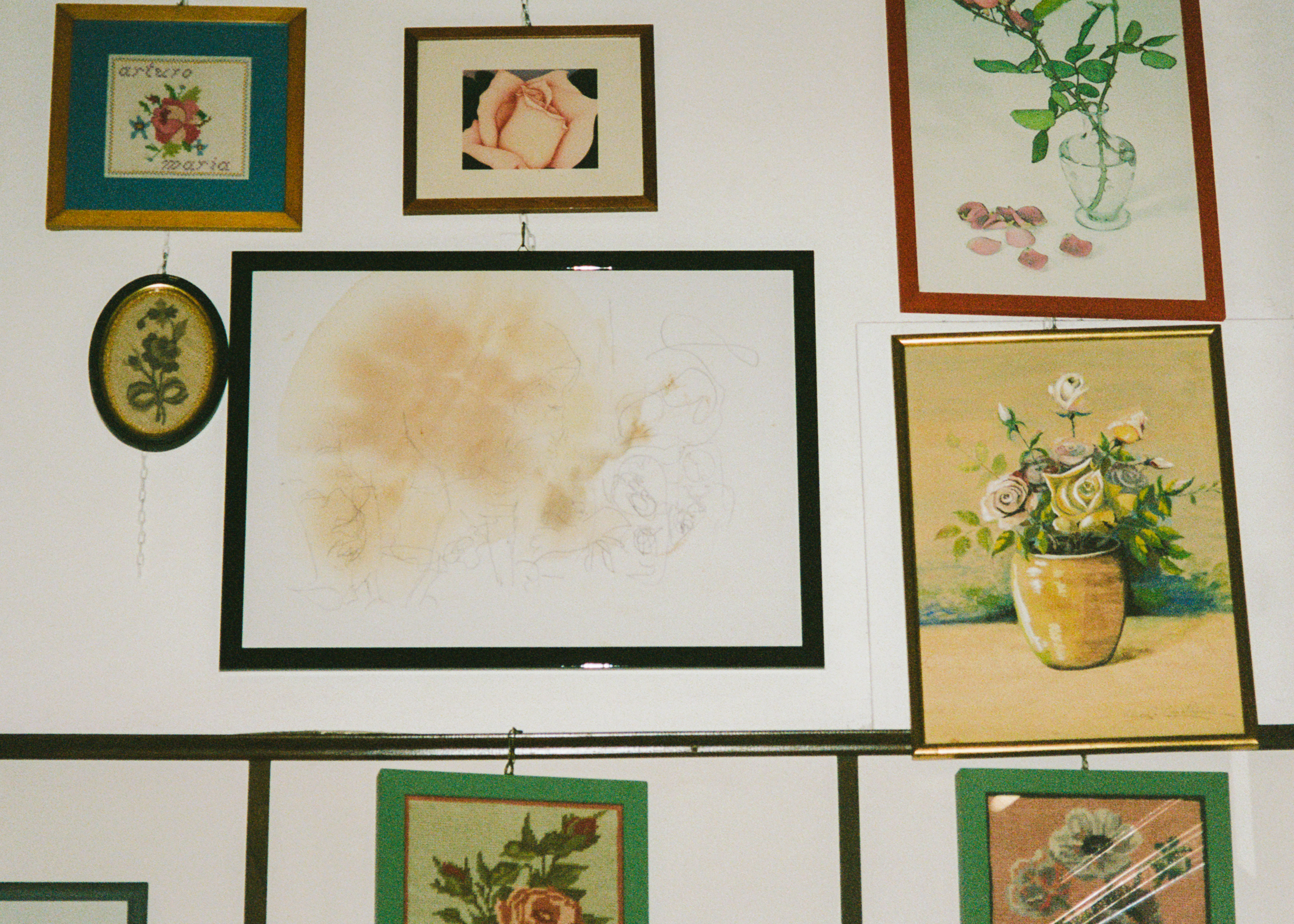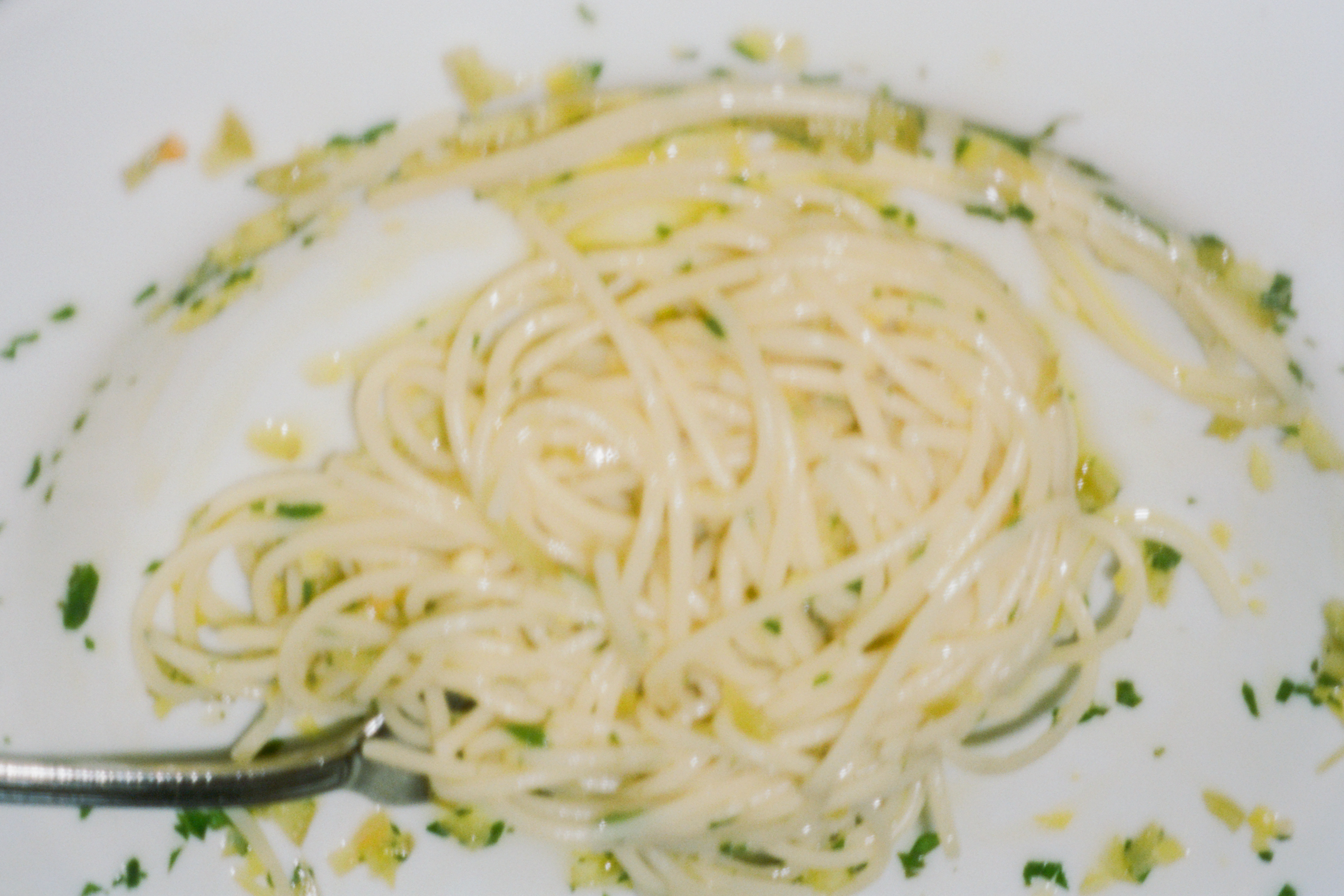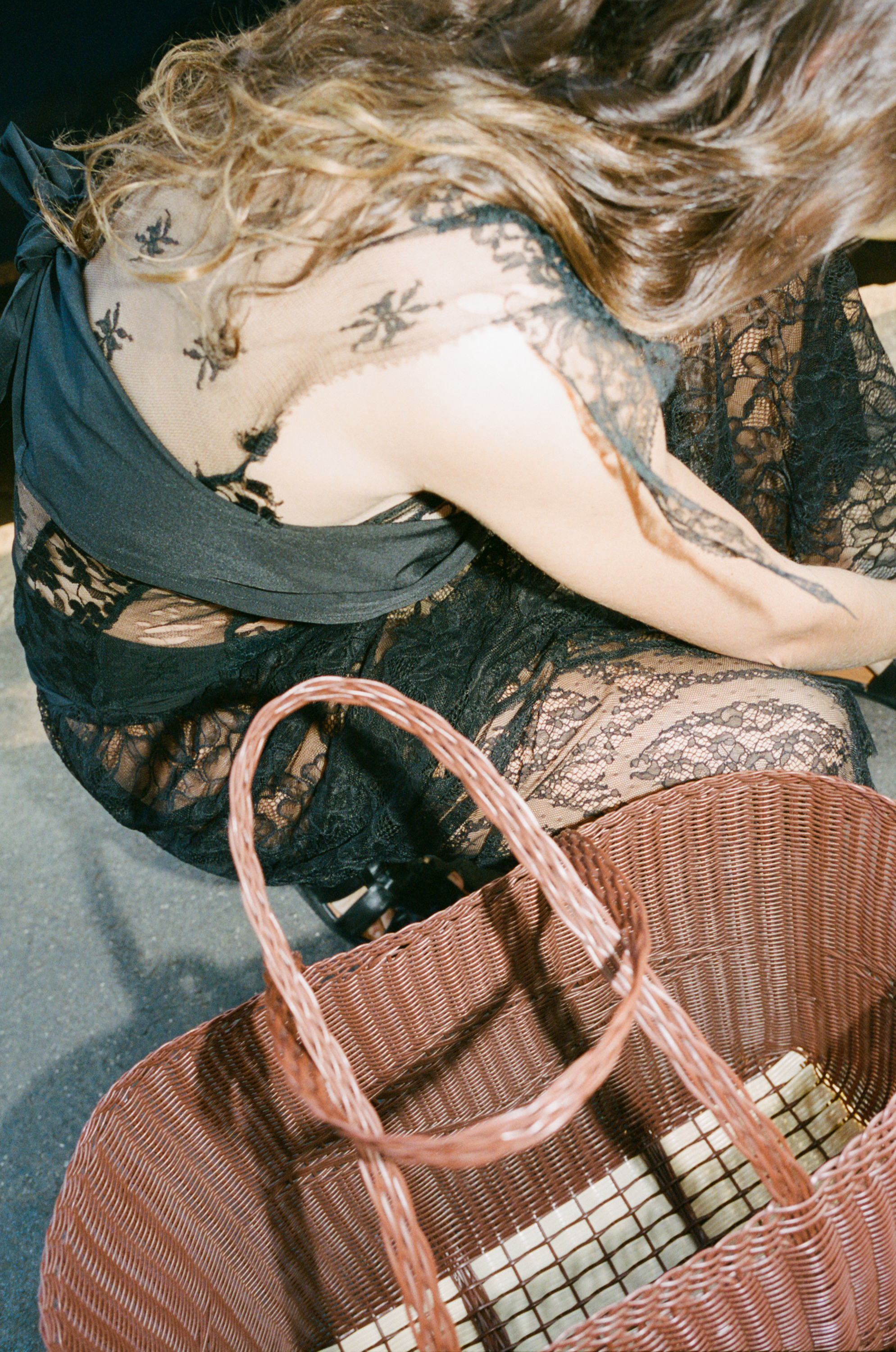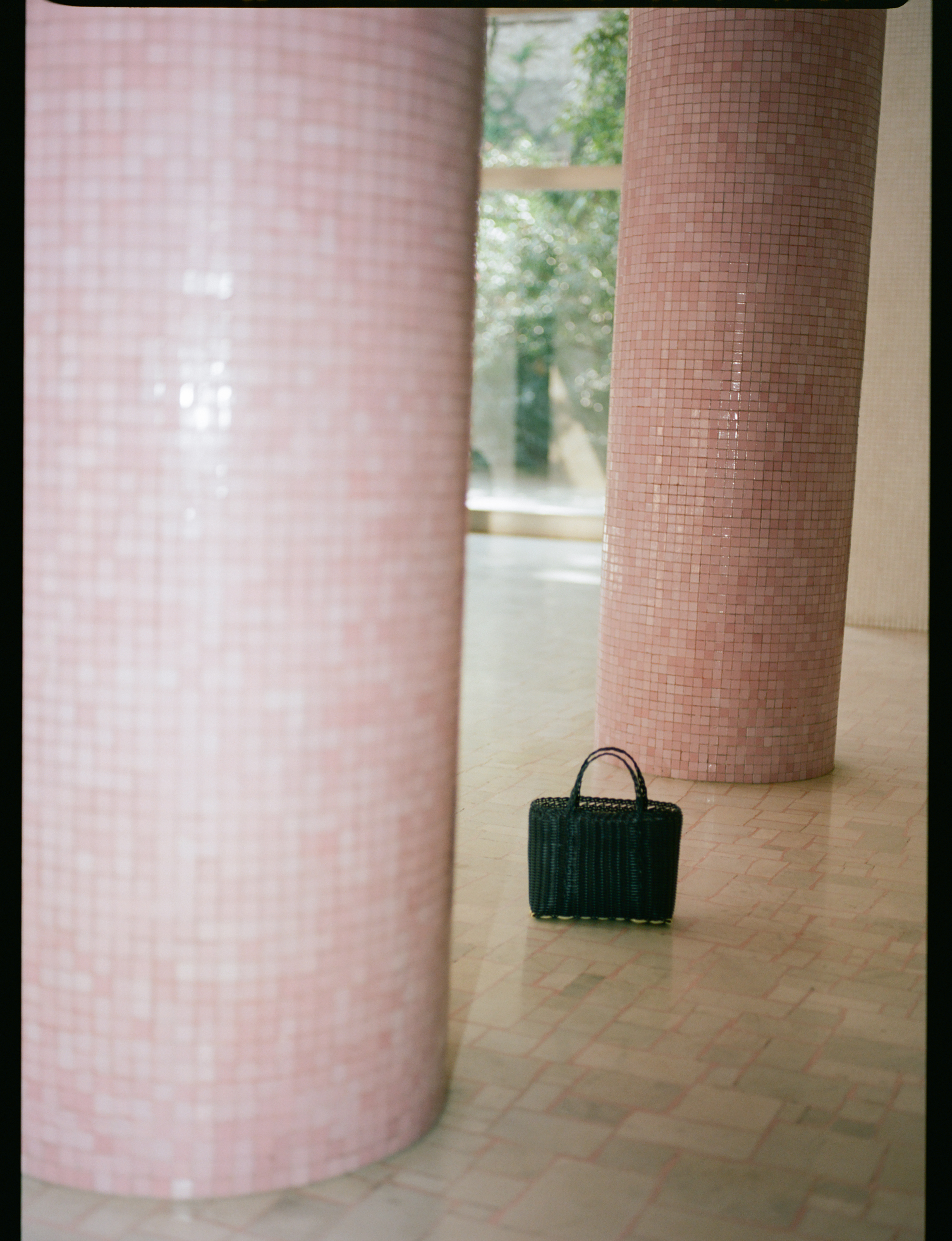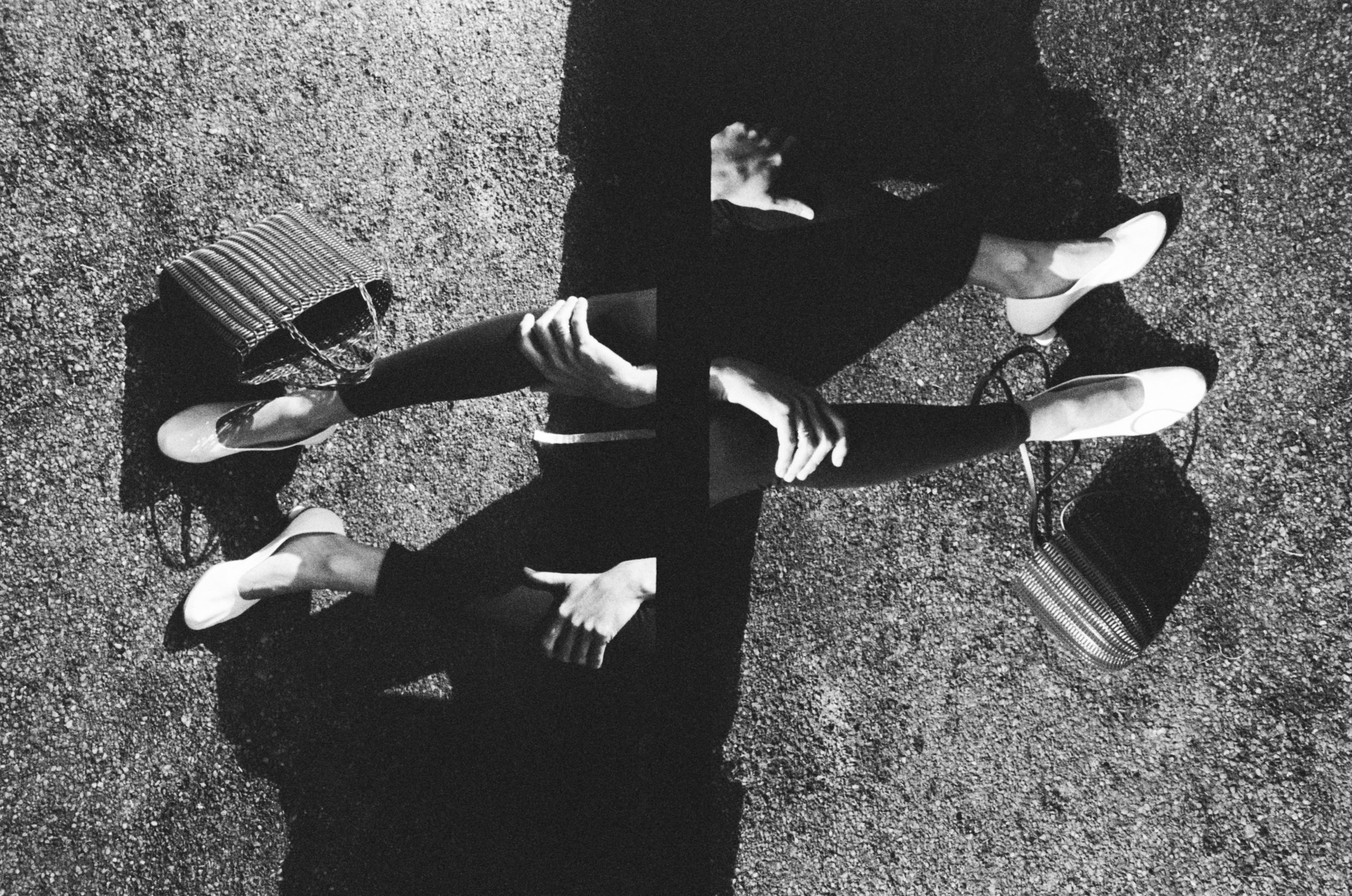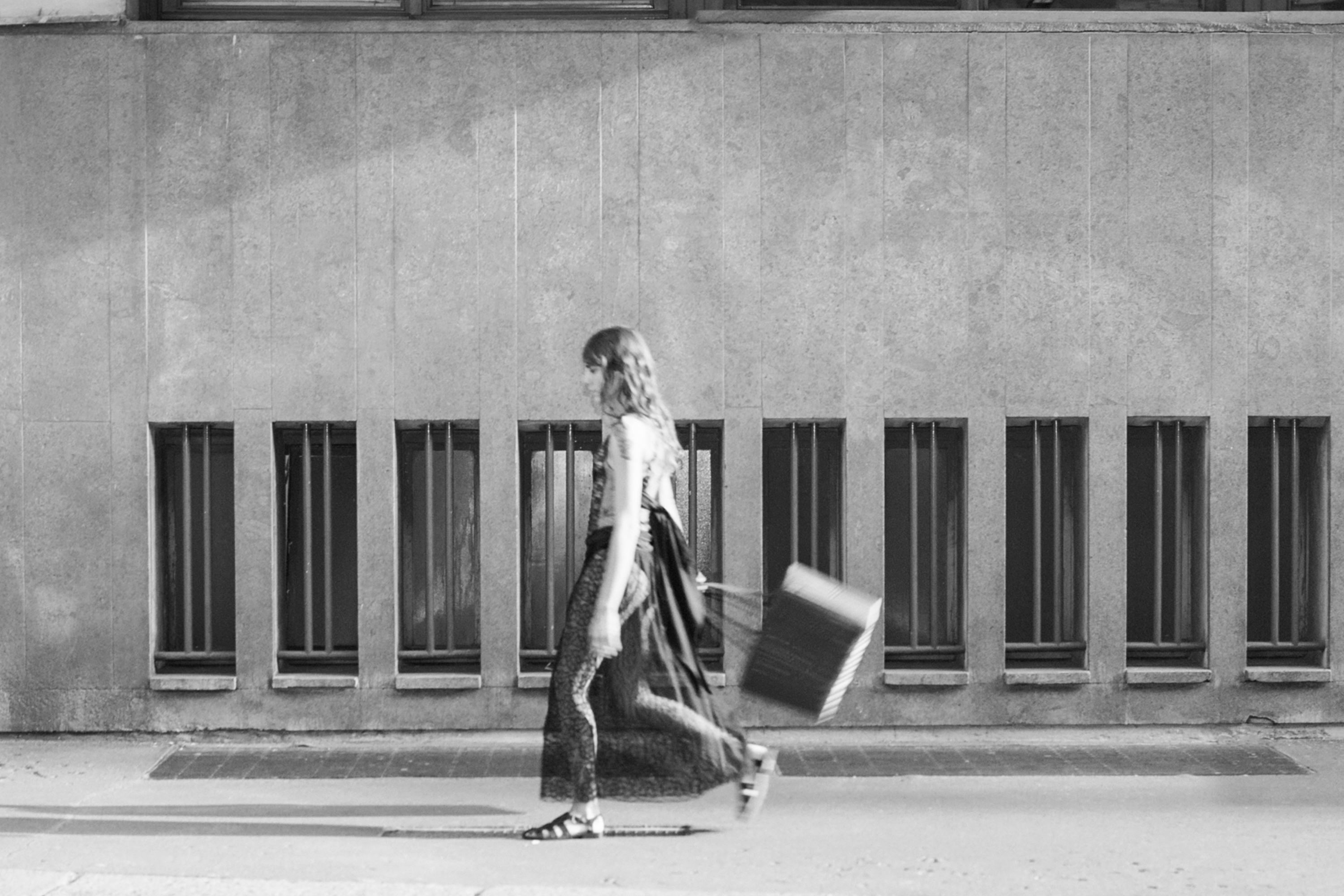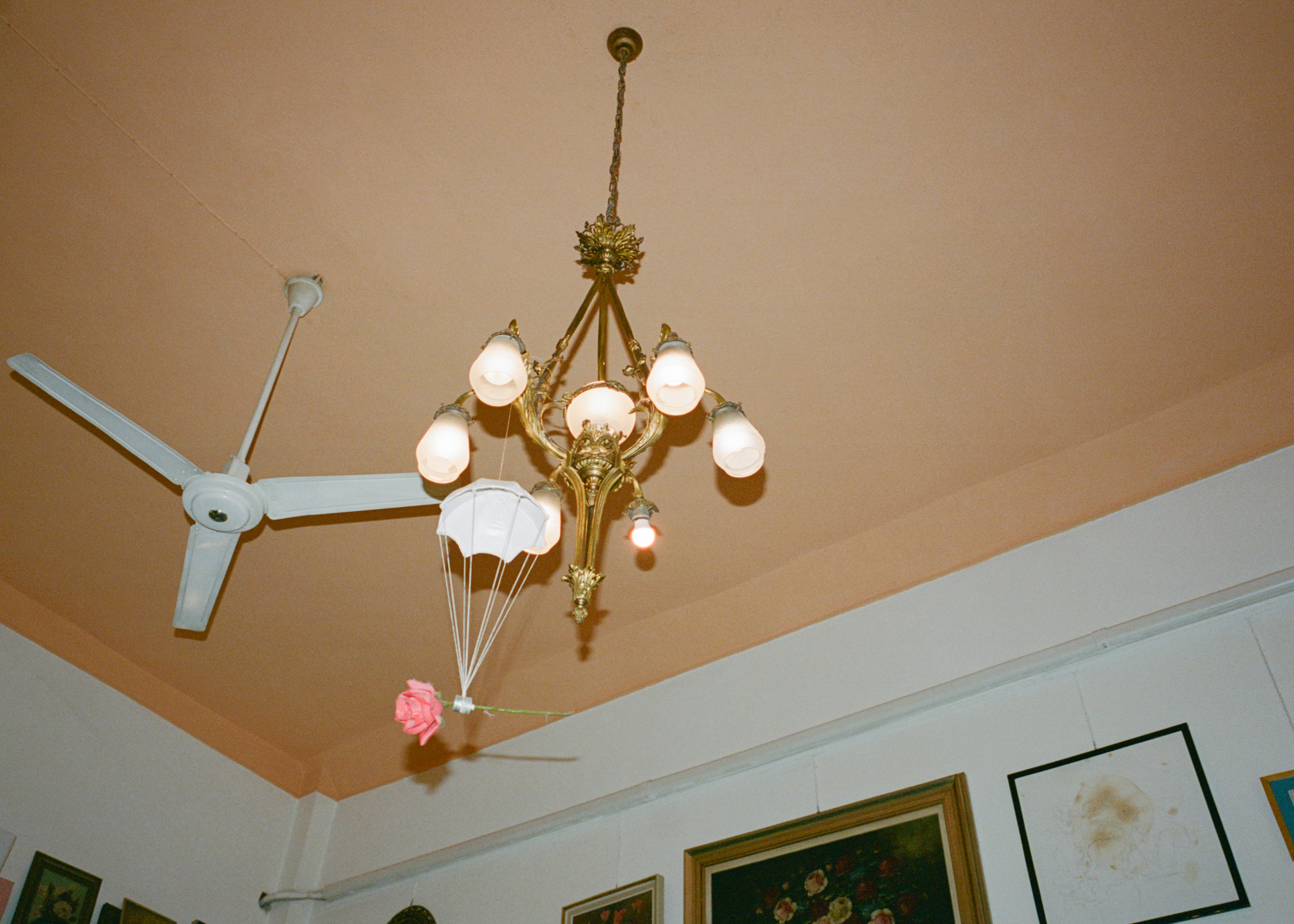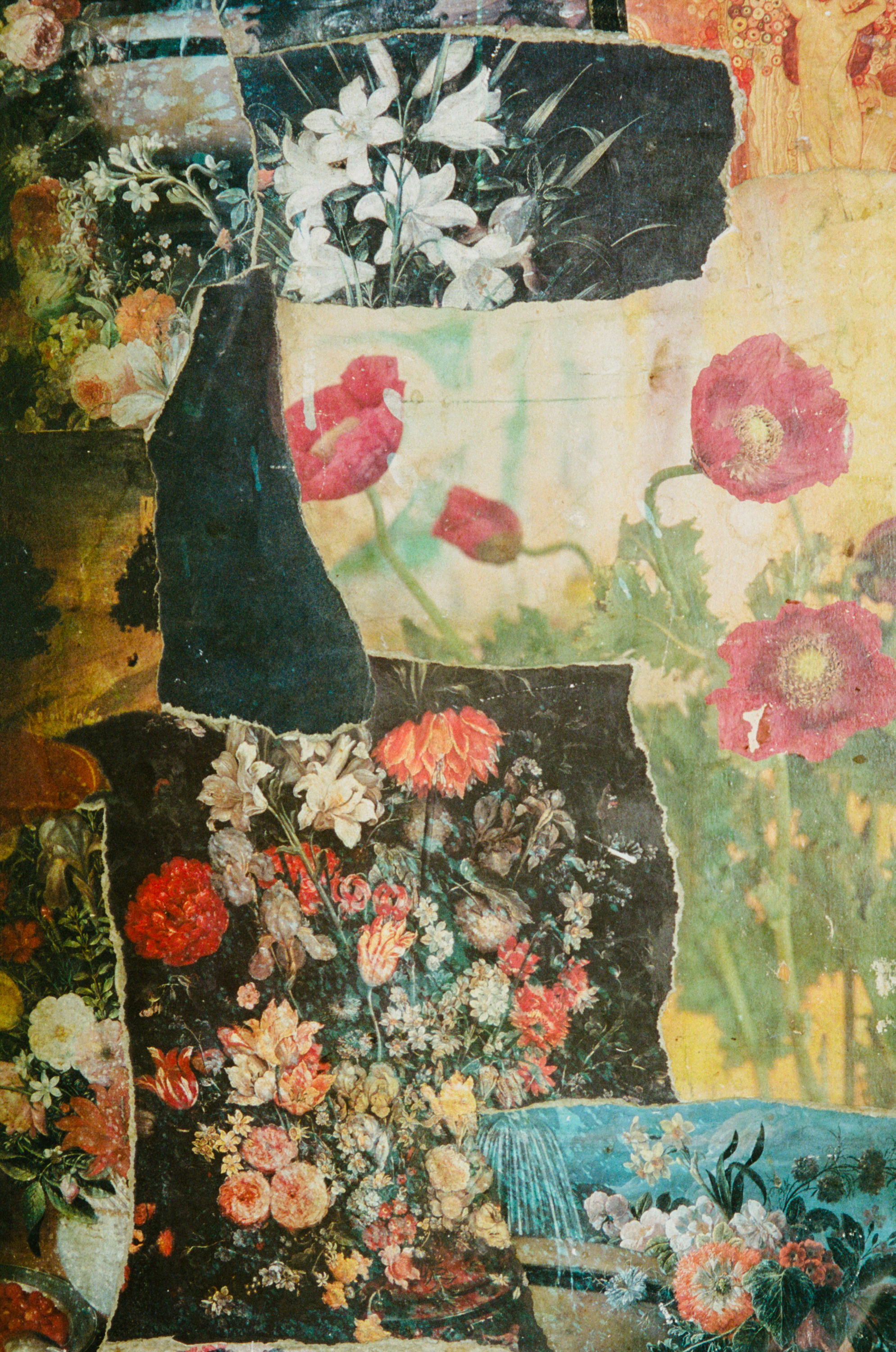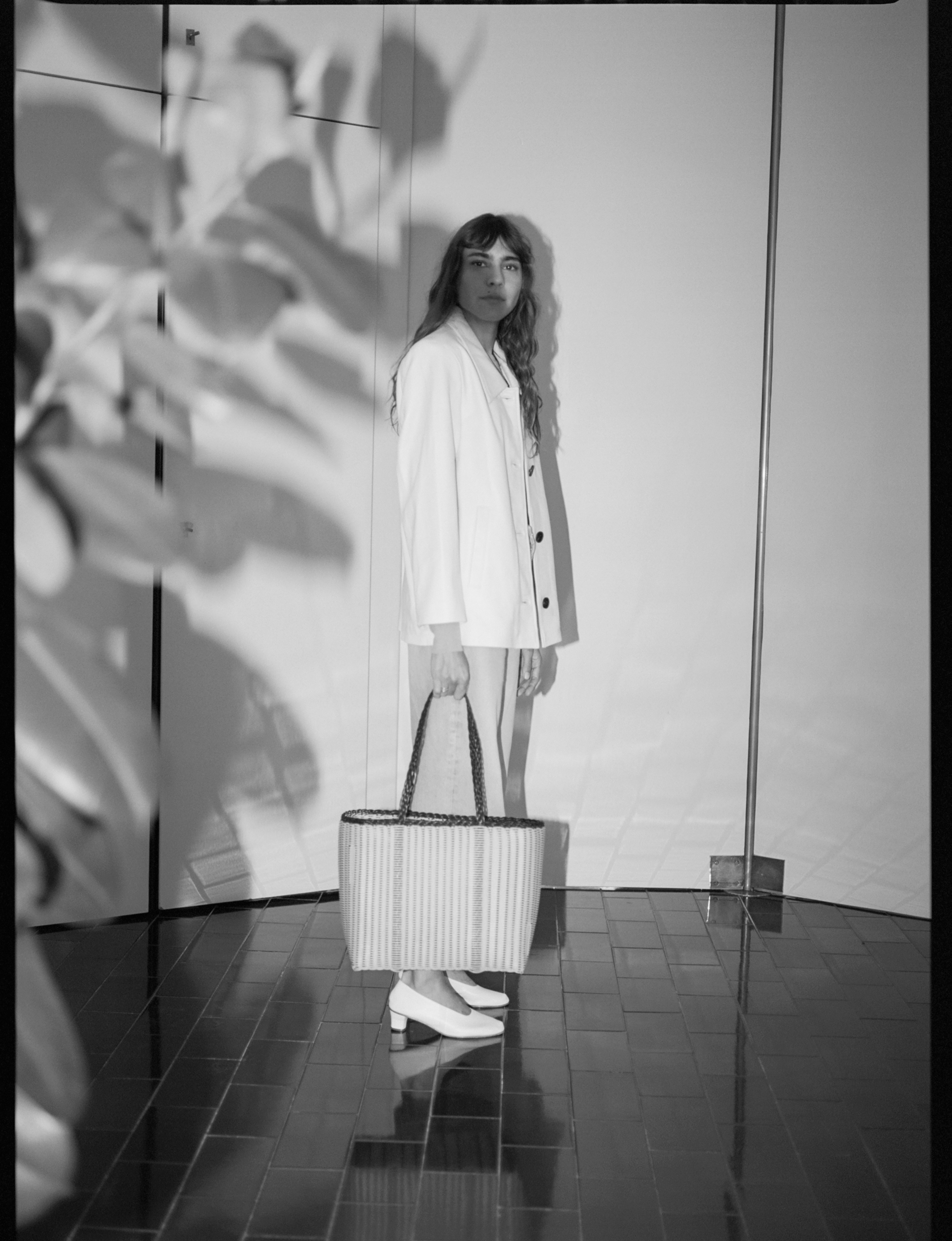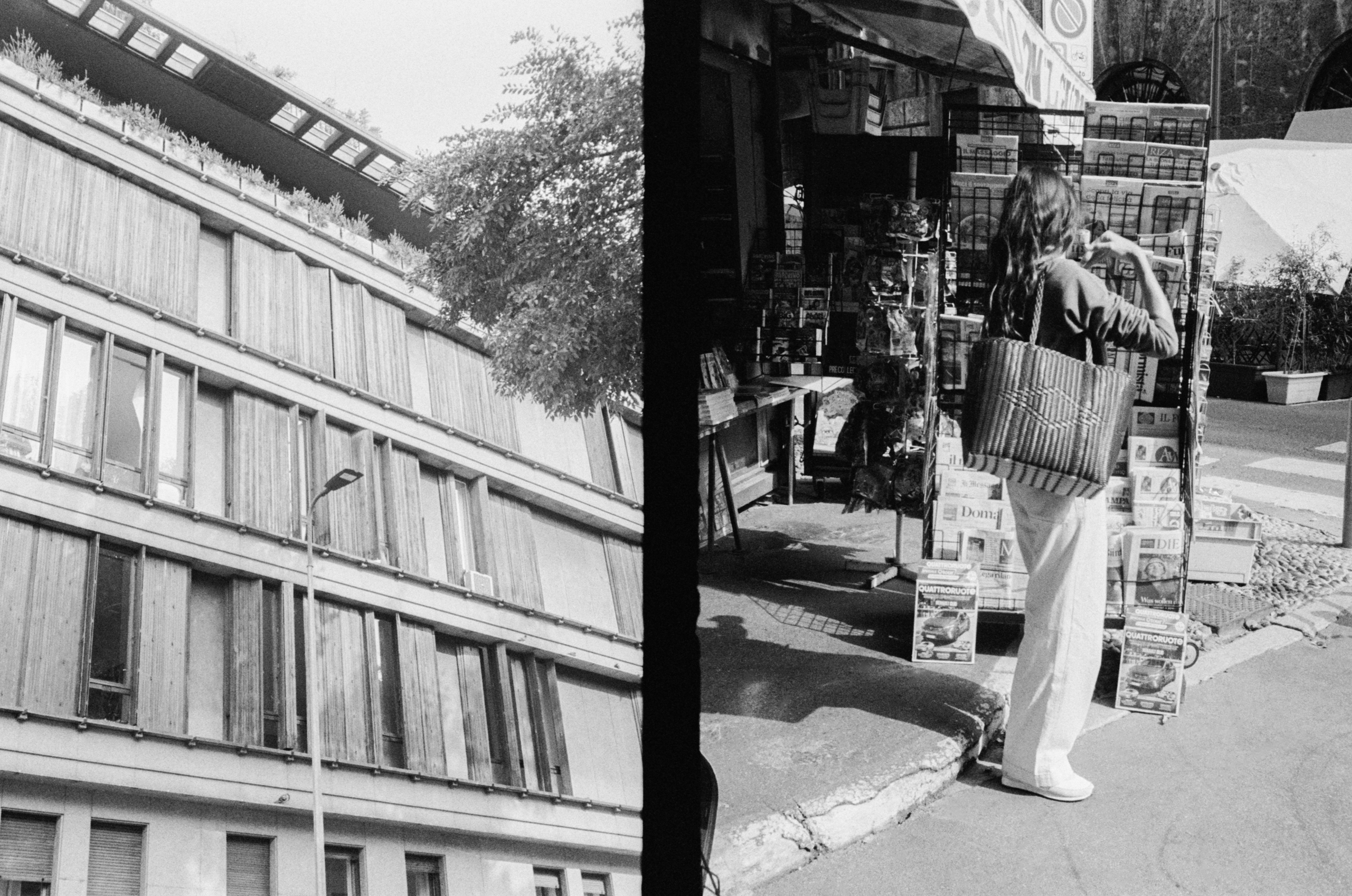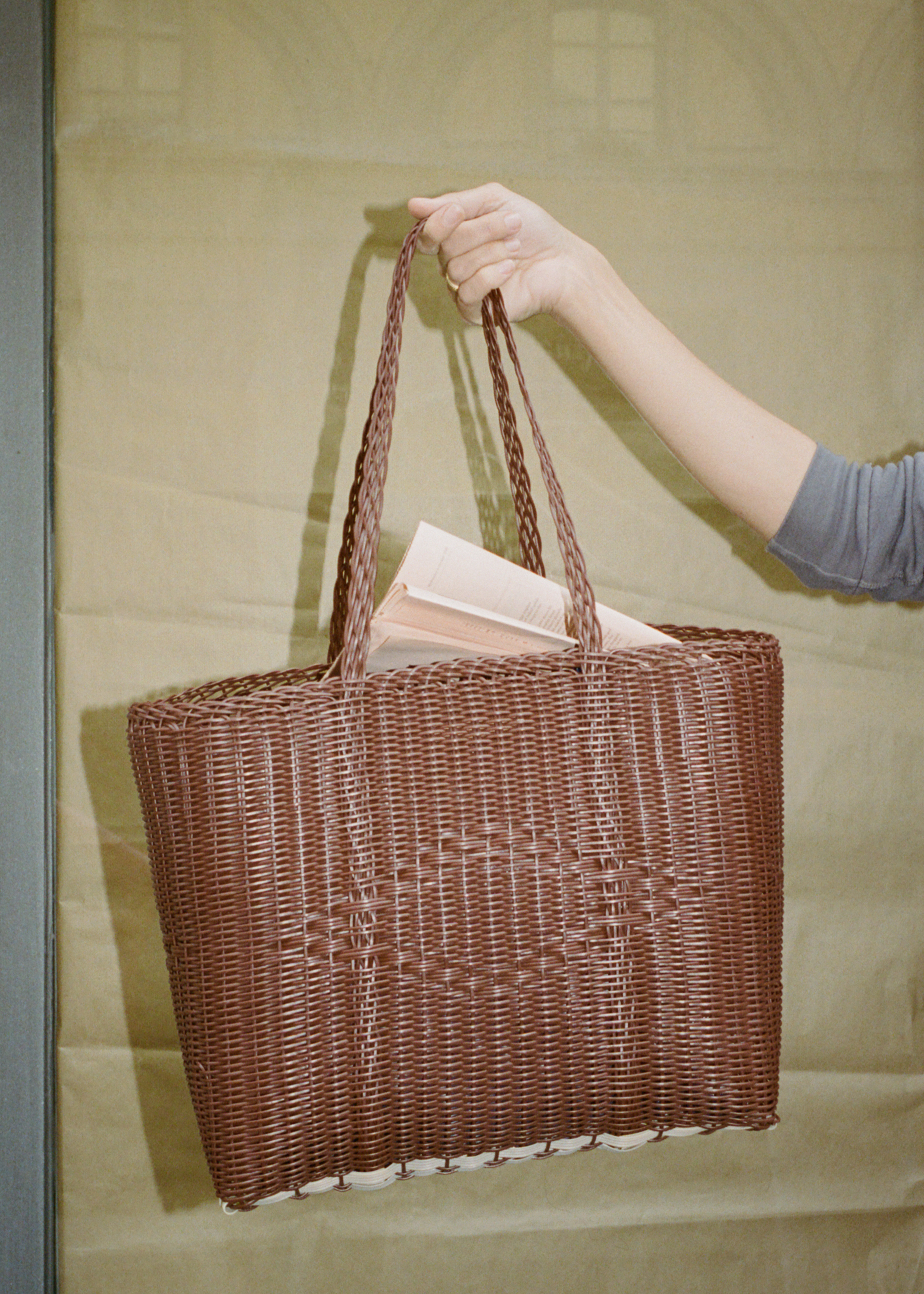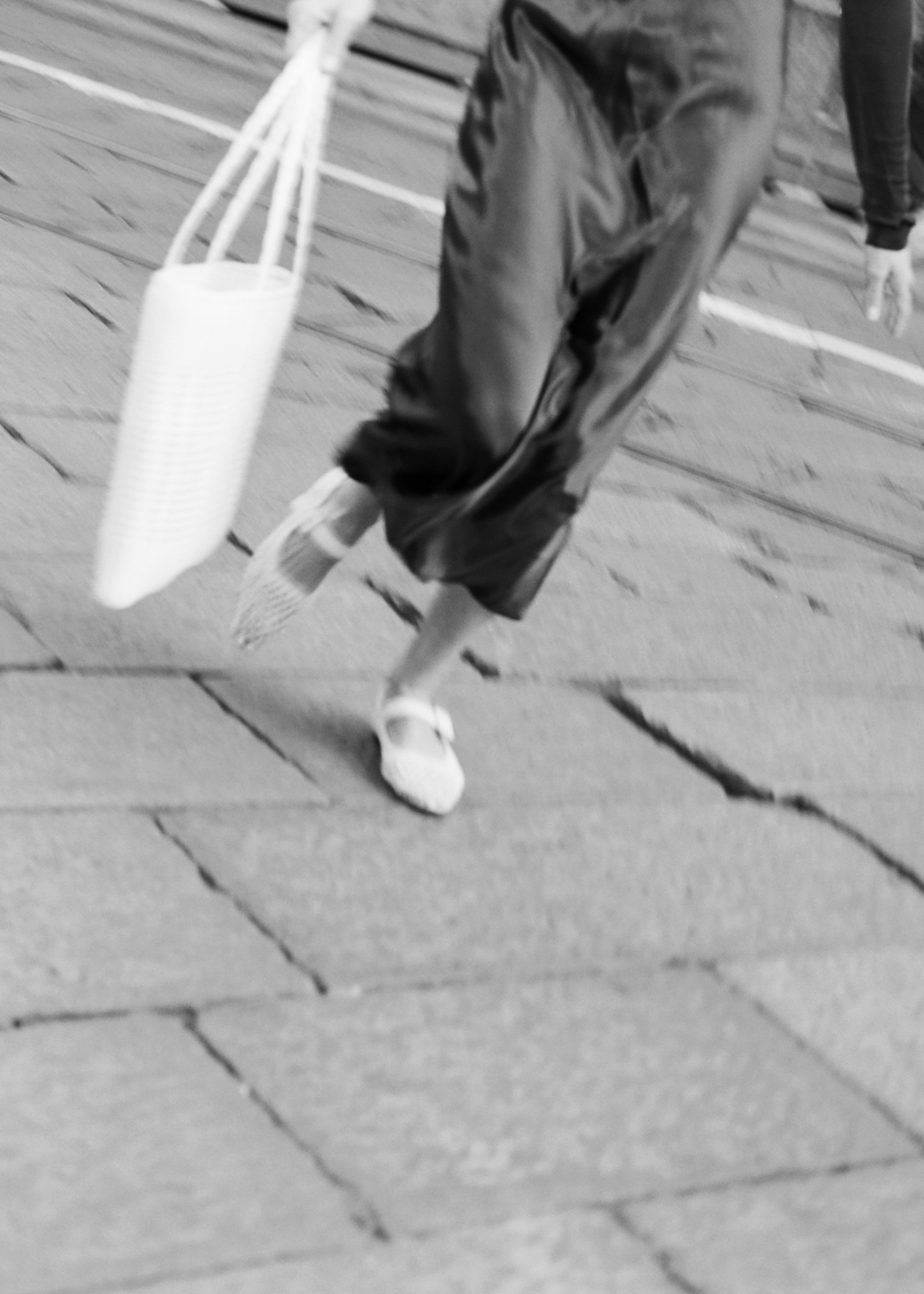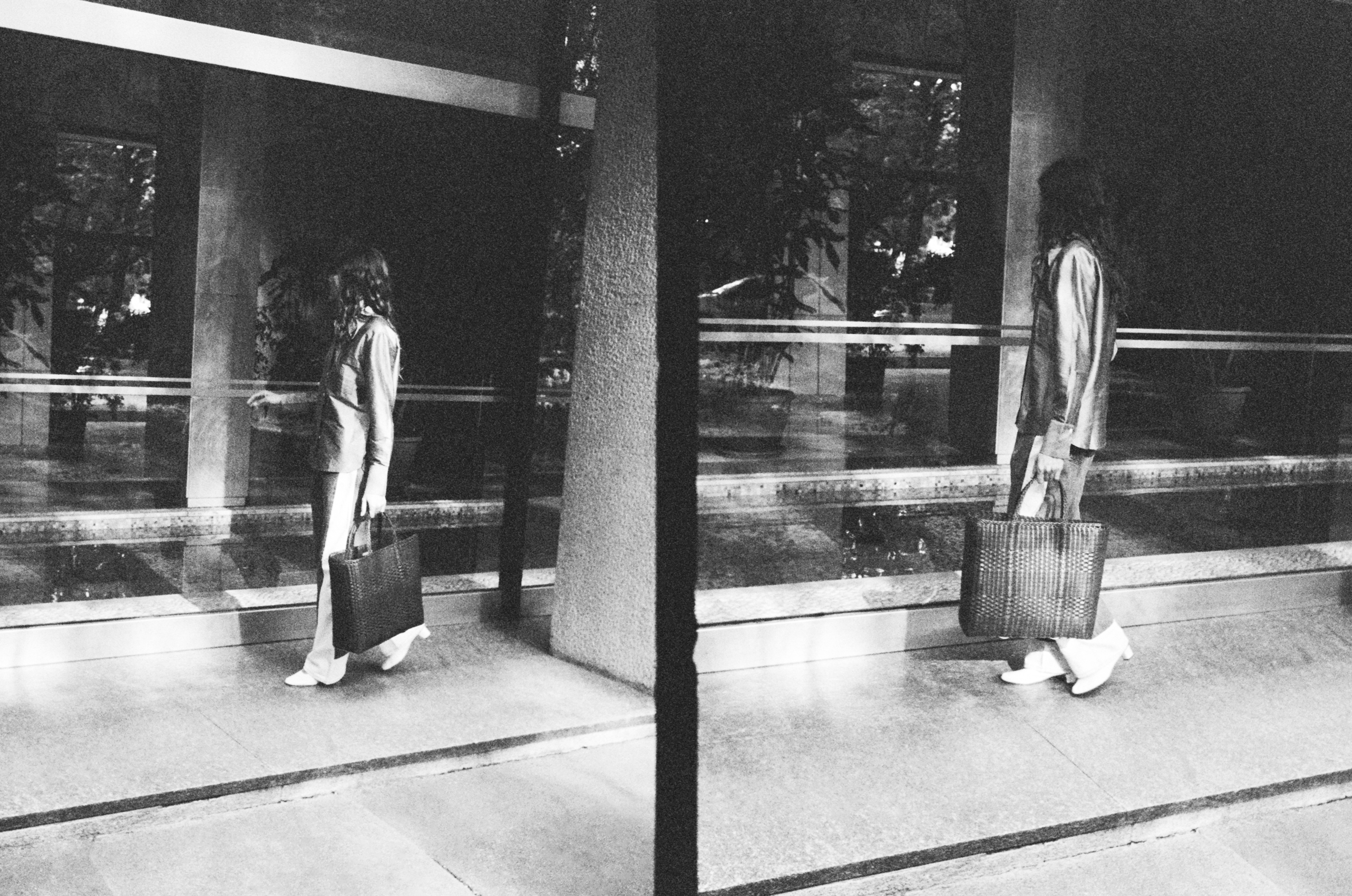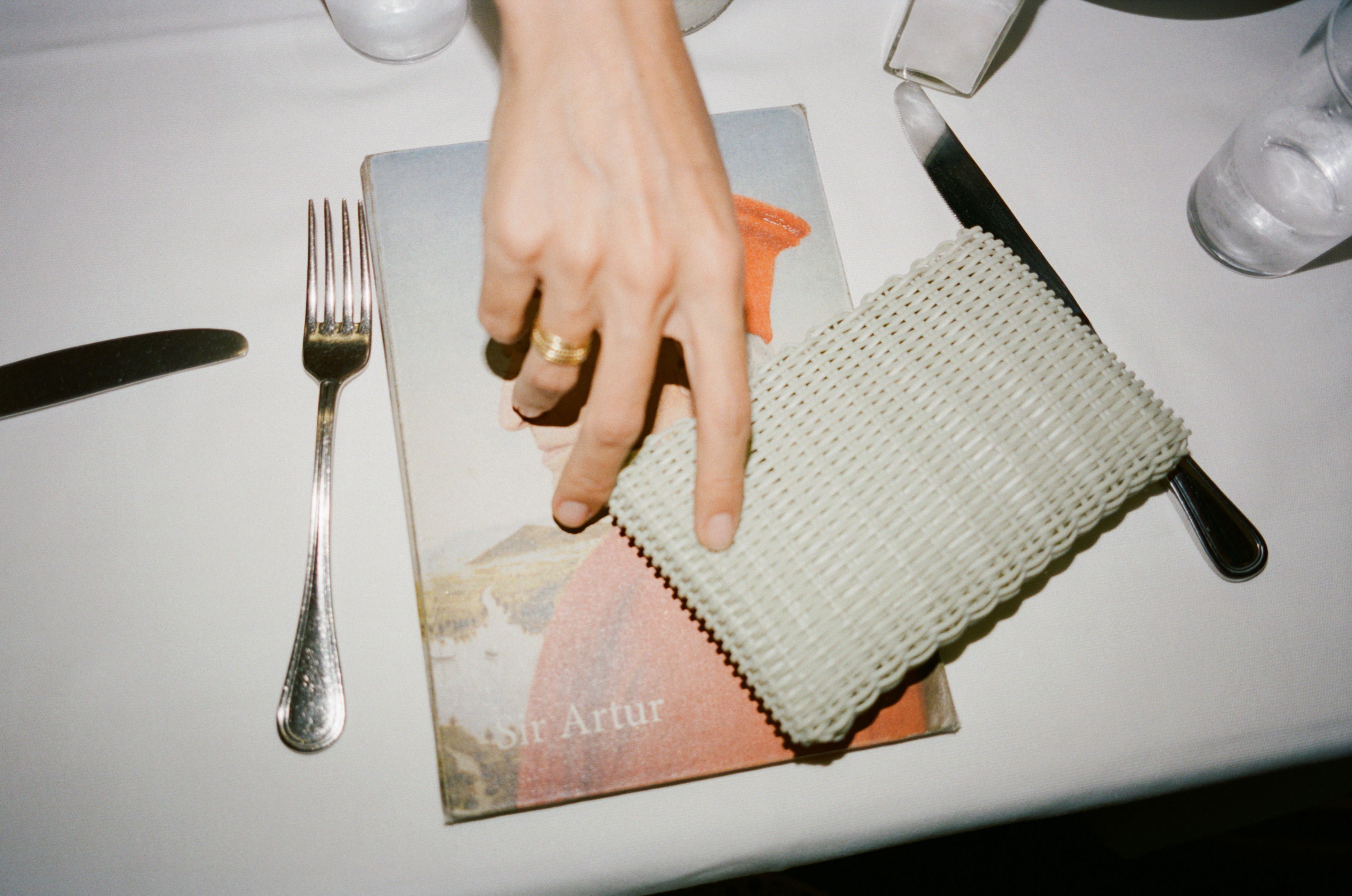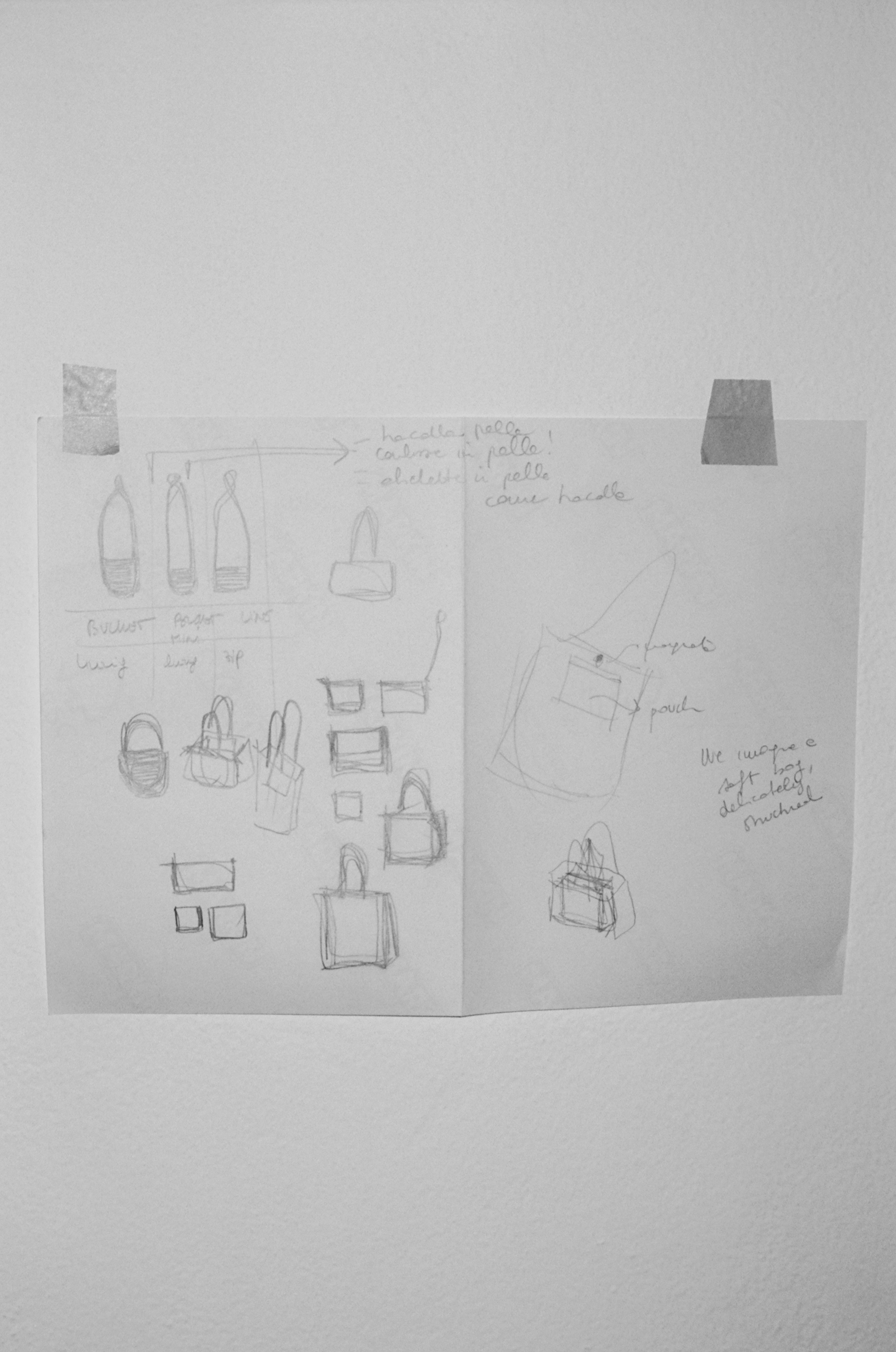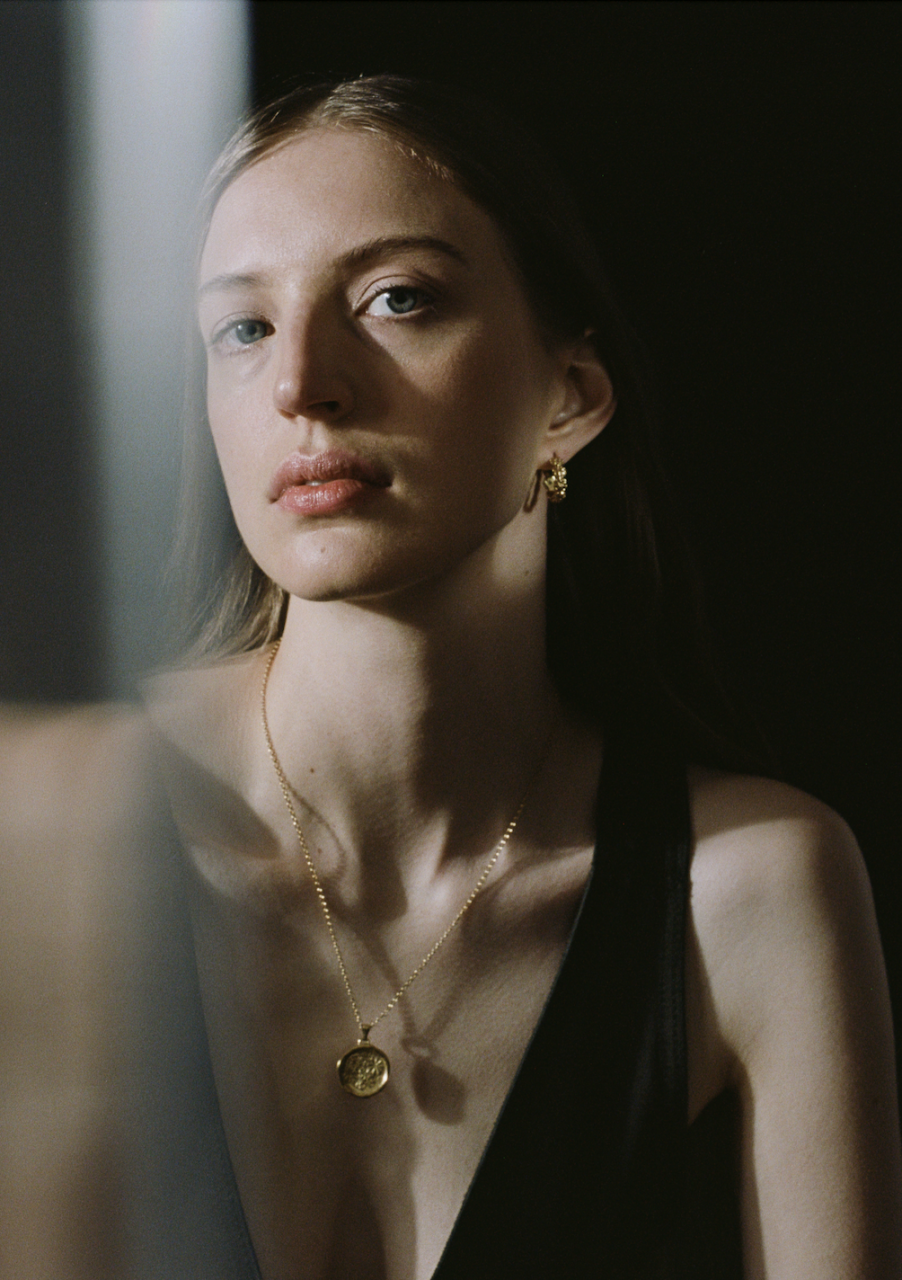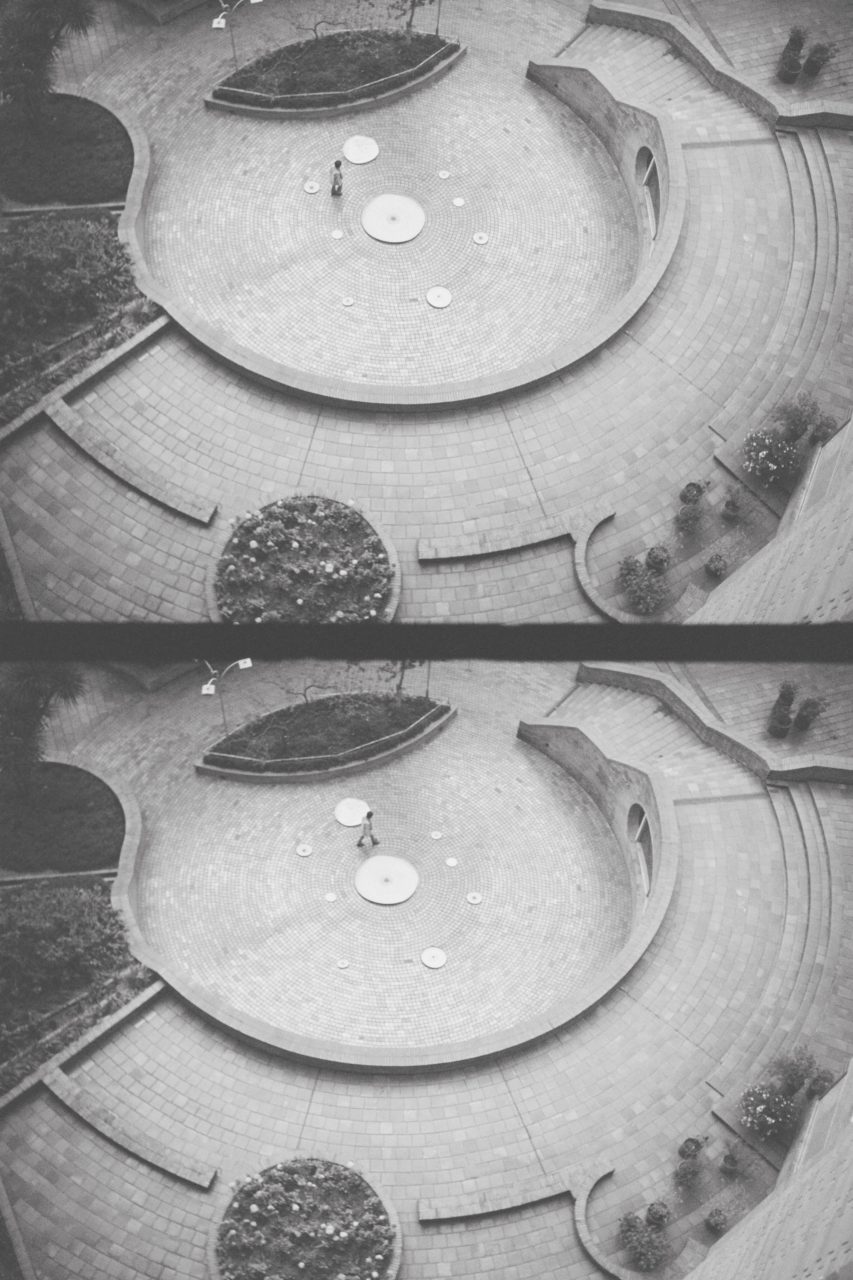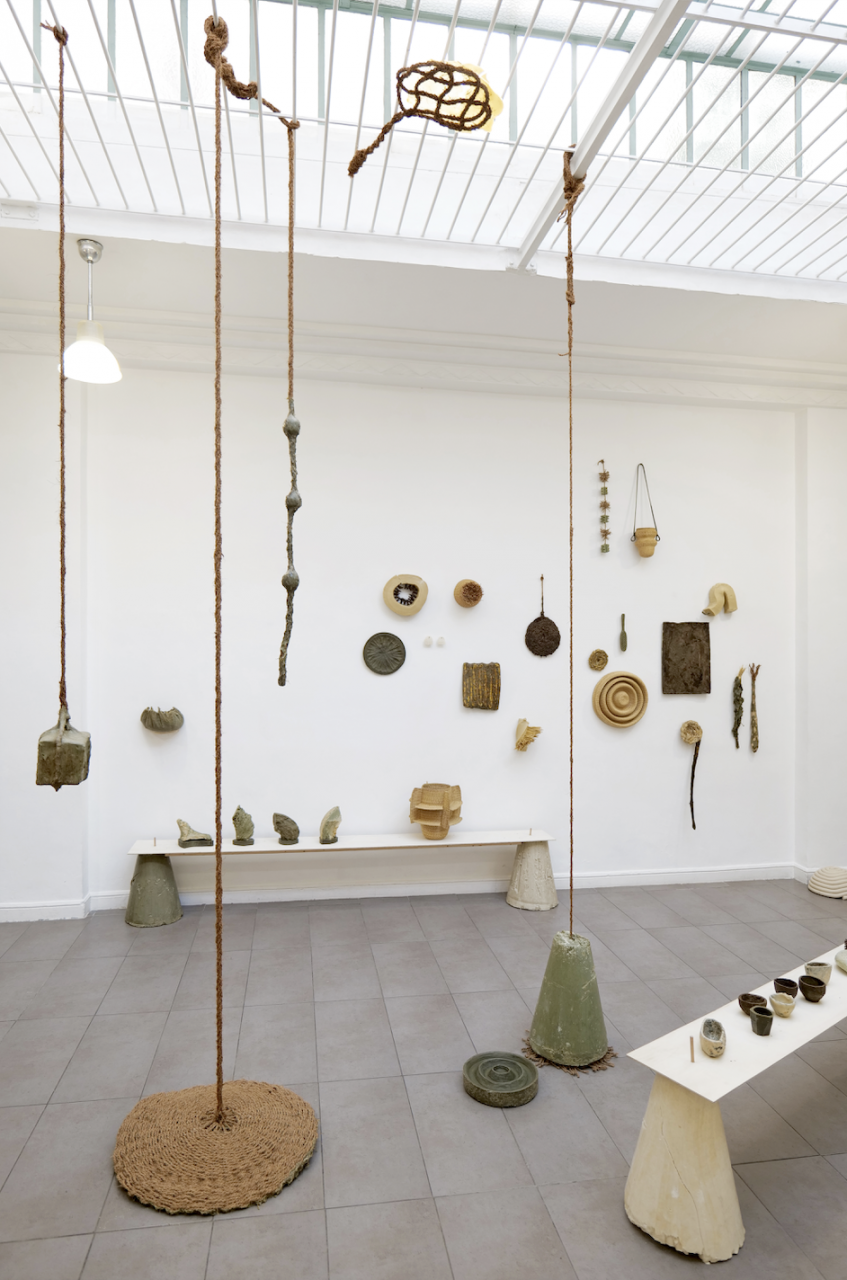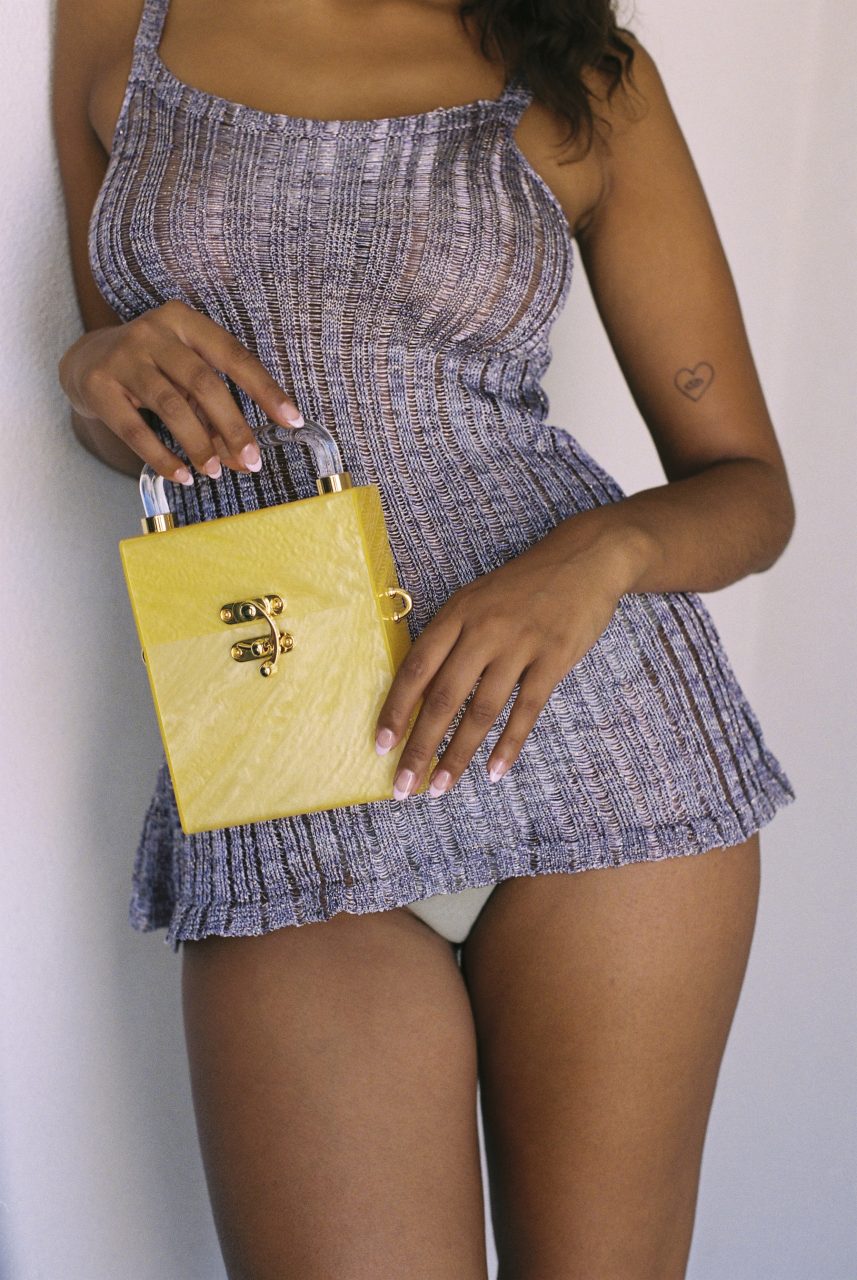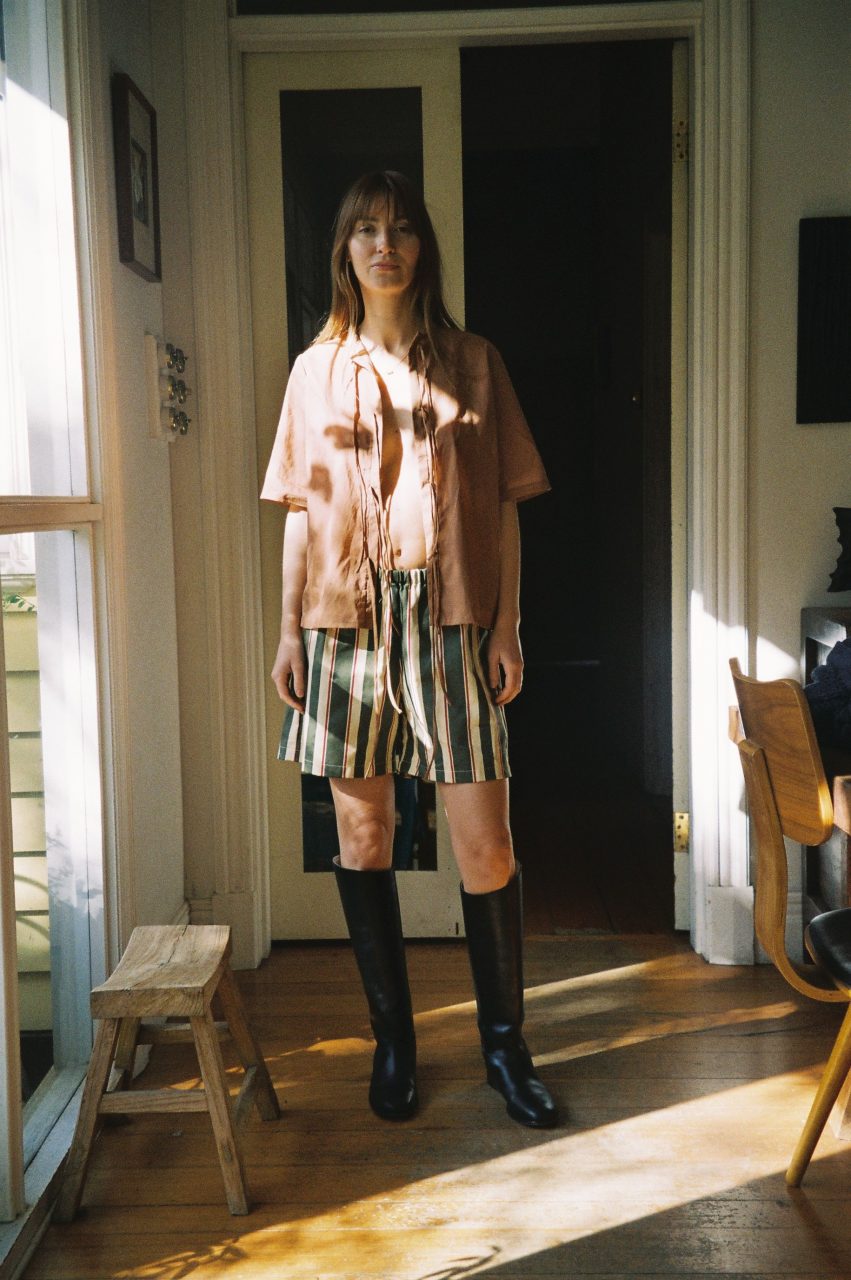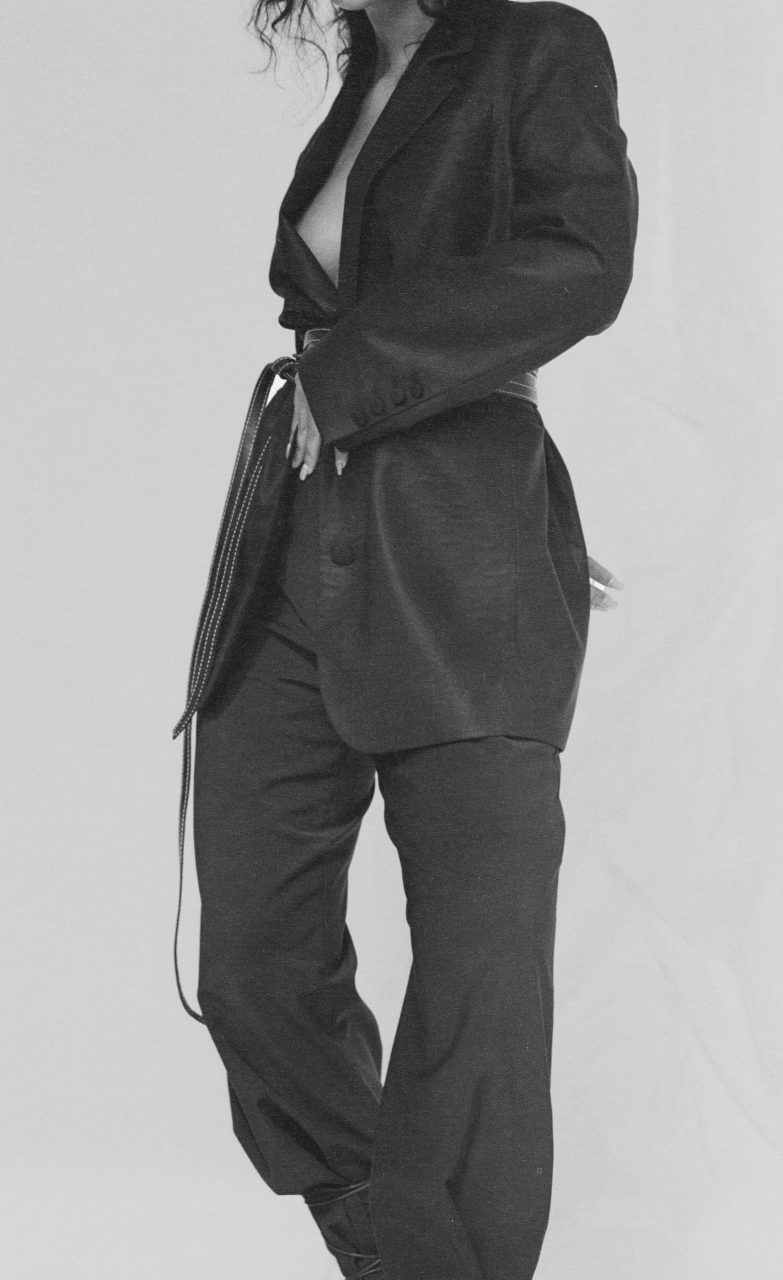The Palorosa project, launched by Cecilia Pirani in 2014, released Mercado tote bags for spring-summer 2024, inspired by Guatemalan market life. Pirani, who is half Guatemalan, half Italian, was born and raised in Milan and moved to Guatemala in 2012, naming the project after the Tabebuia Rosea, or ‘Palo de rosa’, a neotropical tree native to Central America, often planted along streets and in parks. ‘In February 2024 I travelled for a while in Guatemala, exploring my favourite spots and markets, flower shops and little stores, trying to observe with another eye all women wearing their cool colourful baskets and bags, exactly like when I spent the first months in Guatemala years ago, before Palorosa. And it is among these authentic and contemporary imaginaries that the new Mercado tote bags are born,’ explains Cecilia.
Mercado by Palorosa
Shot by Andrés Altamirano in famed La Latteria (before it shuttered) muse Mari Giudicelli wears city-friendly separates in and around Milan, where the Palorosa studio and store is centred, mirroring a similar versatility of the softly coloured new collection. ‘It took a while for me to see Milano, to figure out how to talk about Palorosa, and how to imagine Palorosa in this beloved city,’ Cecilia tells me, ‘I met Andrés in his studio in Brooklyn the past summer; after some chat about Guatemala and photography, and most of all, about how all the women all around the world are wearing baskets, the idea to shoot in Milano came up. It immediately occurred to him to involve his dear friend, Mari Giudicelli, who brings her Brazilian and Italian origins in her beauty and essence. The perfect muse for Palorosa.’
Celia describes the beginning of the collaboration, ‘We went back to a side of the origin of Palorosa with a new narrative through the personal and evocative glance of Andrés images and the elegant gestures of Mari, on the streets of Milano: architecture from the sixties, movement, light and delicate colours; textures and fragments of a contemporary city, between a dreamy atmosphere and everyday life interiors.’ She continues, ‘We both love baskets and colours. I am fascinated by the personal vision of Andrés’s work, the materiality and the light of his images, and how he interacts with objects and his muses. Some of the shots I like most are the ones he took of Mari wearing an old huipil he found at my apartment [it’s] a colourful handwoven textile and blouse from Guatemala, typically worn on the highlands [which is] evocative and symbolic of Palorosa’s creative and colour research, and origin story.’
Before the Palorosa project, Cecilia worked on urban park development as a landscape architect in Milan, which goes some way to explain her easy focus on utility and practicality. In Latin America, the handwoven plastic bags have long been a mainstay for rural women, carrying almost everything they need without fear of breakage. The bold, fresh colours in the markets of Guatemala have been adapted by Pirani for a more metropolitan feminine; blue lilac, earthy tobacco, chocolate and palm green are introduced in the geometric patterns of Mercado. Colours are to me the most important inspiration to design and imagine an object, and [they are] the signature of Palorosa bags,’ she adds.
While the Palorosa atelier and workshop is located in Guatemala City, different groups of artisans are employed across the Western Highlands, many weavers working from home. Women dominate the small workforce, the nature of the craft allows them to share the load with husbands and other family members who often combine their existing livelihoods, such as agriculture, some working by commission, others salaried. It’s been a natural evolution, rather than a conscious effort to build a social project; relationships have grown based on mutual benefit and on an individual basis, rather than by bureaucratic recommendation.
That’s not to say Palorosa’s craft production exists without challenge; Cecilia is invested in moving towards using only recycled plastic – the type of thread they currently use being a mix of pure plastic and post-consumer recycled plastic – which is proving problematic given their relatively small and specific production in Guatemala. Though plastic is rarely spoken of in positive terms, by manufacturing a single-material product (that maintains shape and colour over time) Palorosa has the potential to grow without losing the benefits of craftsmanship to industrial production, and while made-to-order reduces waste, the little they do create can be recycled.
The real win is the creation of an object designed for keeps, that can be used well during daily life in both town and country. Cecilia describes a synthesis between tropical naturescapes, women moving swiftly through bustling markets, baskets on heads with bags in hand, and an urban culture of design, a contemporary palette to gently counter concrete jungles. This season, it’s through the eye of Ecuadorian photographer, Andrés Altamirano, that we see the Palorosa project balance both.
Words by Reeme Idris
THE SPRING 2024 EDITORIAL PROJECT
Photographer Andrés Altamirano
Styling Irene Barra
Muse Mari Giudicelli

